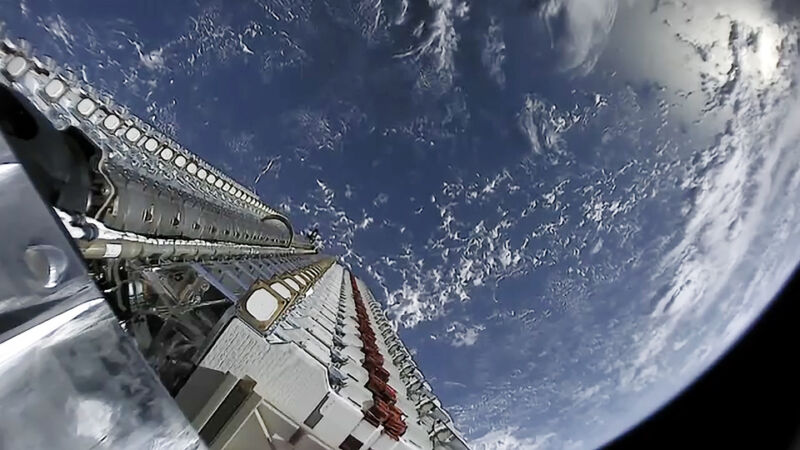
Starlink broadband speeds will double to 300Mbps “later this year,” SpaceX CEO Elon Musk wrote on Twitter yesterday. SpaceX has been telling users to expect speeds of 50Mbps to 150Mbps since the beta began a few months ago.
Musk also wrote that “latency will drop to ~20ms later this year.” This is no surprise, as SpaceX promised latency of 20ms to 40ms during the beta and had said months ago that “we expect to achieve 16ms to 19ms by summer 2021.”
It sounds like the speed and latency improvements will roll out around the same time as when Starlink switches from beta to more widespread availability. Two weeks ago, Starlink opened preorders for service expected to be available in the second half of 2021, albeit with limited availability in each region.
Global coverage, but low density
Musk wrote in another tweet yesterday that Starlink will be available to “most of Earth” by the end of 2021 and the whole planet by next year. But even then, the number of slots available to users would be limited in each geographic region.
Musk wrote that “densifying coverage” is the next step after Starlink is technically available across the planet. “Important to note that cellular will always have the advantage in dense urban areas. Satellites are best for low to medium population density areas,” he wrote.
That’s consistent with Musk’s statement last year that Starlink will have limited availability in big cities like Los Angeles “because the bandwidth per cell is simply not high enough” and that “Starlink will serve the hardest-to-serve customers that telcos otherwise have trouble doing with landlines or even with… cell towers.” In the US, Internet users who must currently rely on DSL or traditional geostationary satellite service would benefit the most from Starlink’s low-Earth-orbit satellites.
SpaceX was tentatively awarded $885.51 million in Federal Communications Commission funding over 10 years to bring Starlink to 642,925 homes and businesses in 35 states. Rival ISPs have been trying to block the funding, claiming that SpaceX won’t be able to deliver the 100Mbps download and 20Mbps upload speeds required by the FCC program.
SpaceX told the FCC that it has over 10,000 users in the US and abroad so far and is already delivering the required speeds and “performance of 95 percent of network round-trip latency measurements at or below 31 milliseconds.” In another FCC filing, SpaceX said that Starlink will eventually hit 10Gbps download speeds.
Starlink recently became available in the UK.
